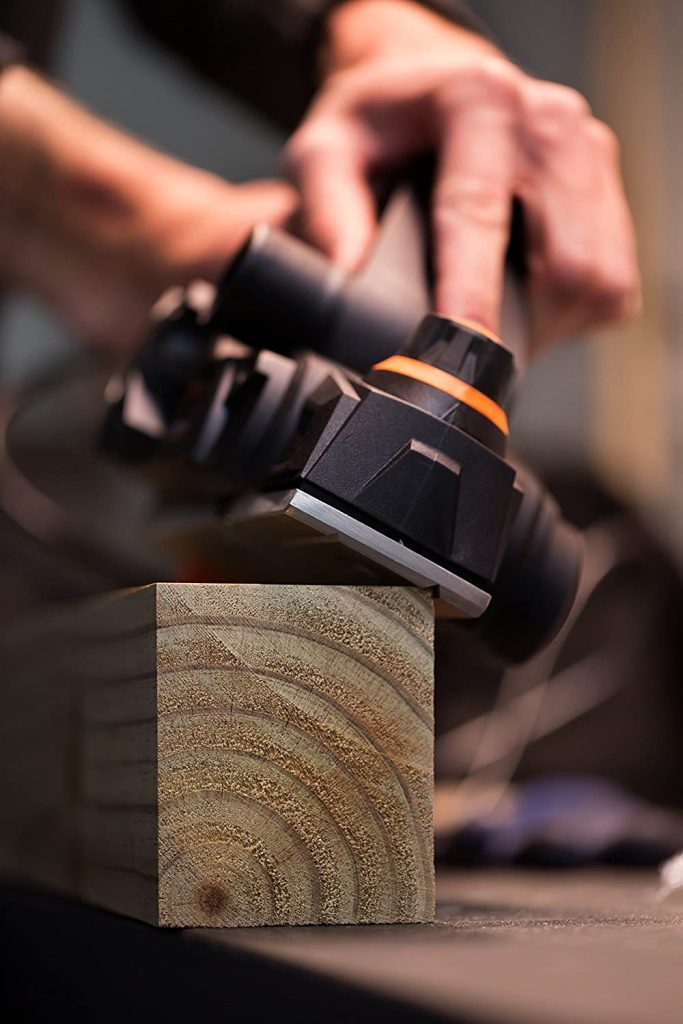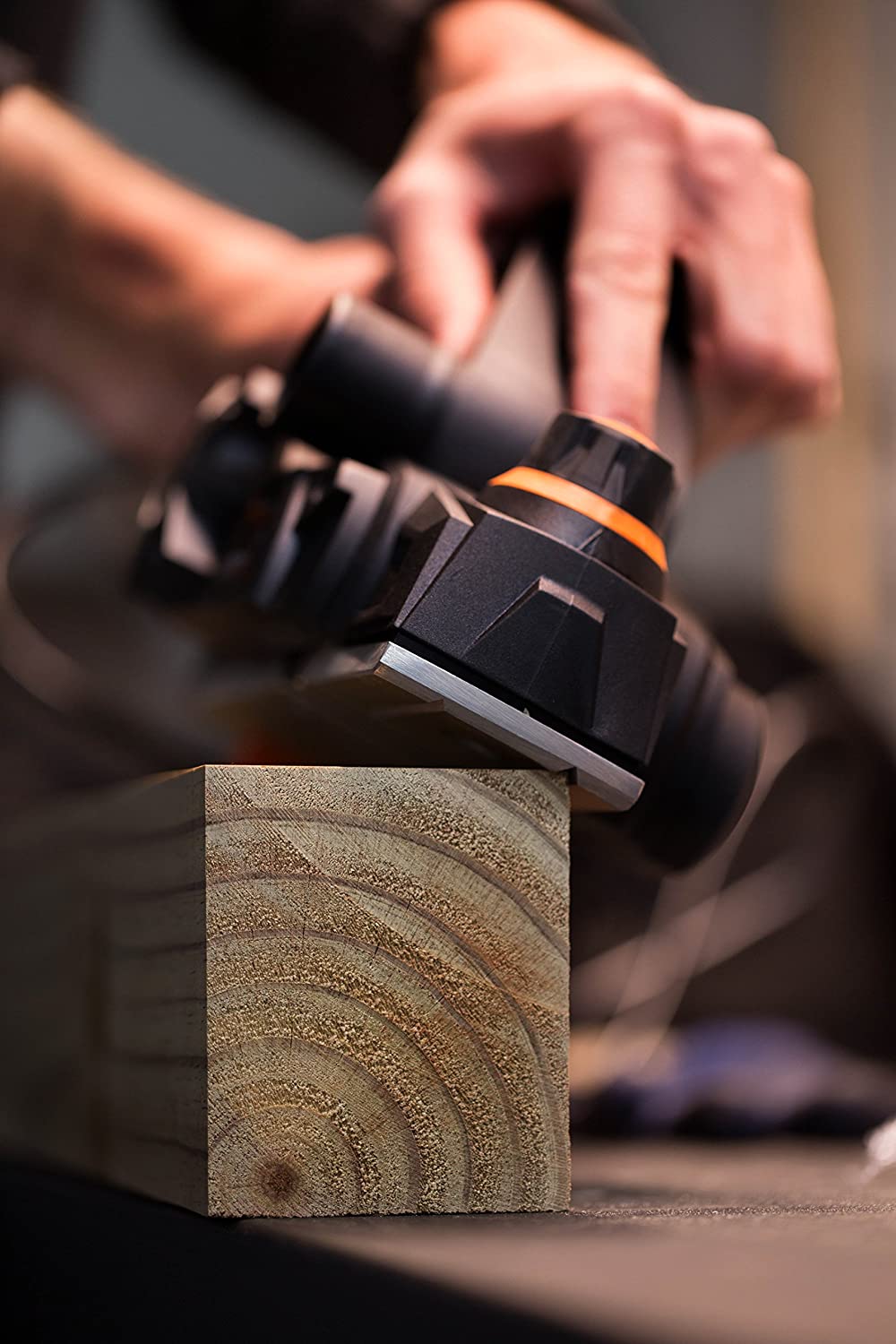An electric planer is a versatile tool that can be used to smooth and level a variety of surfaces. When using an electric planer on a table top, there are a few things to keep in mind in order to get the best results. First, it is important to choose the right size of planer for the project at hand.
Second, when setting up the planer, be sure to use clamps or another method of securing the work piece so that it does not move during the planning process. Finally, take care when removing shavings from the surface as they can be sharp and cause injury if not handled properly.
- Begin by ensuring that the work surface is level and clean
- Place the electric planer on the edge of the table top, with the blade facing away from you
- Turn on the planer and slowly guide it along the edge of the table top, letting the blade do the work
- Keep a consistent pressure on the planer as you move it along, allowing for even results
- Stop periodically to check your progress and make sure that you are happy with how things are looking
- When you are finished, turn off the planer and unplug it from its power source before putting it away
How to use Skil Planer to level tabletop
How Do You Use a Table Planer?
Assuming you are referring to a hand held power tool known as a thickness planer:
A thickness planer is used to create or adjust the thickness of a work piece. The work piece is fed into the machine where spinning blades cut away at it until it reaches the desired thickness.
Thickness planers can be used on a variety of materials, including wood, metal, and plastic.
To use a thickness planer, start by setting the blade depth. Next, turn on the machine and slowly feed the work piece into it, making sure that it does not get jammed in the process.
As the work piece is fed through, the blades will remove material until it reaches the desired thickness. Once finished, turn off the machine and unplug it before removing your work piece.
How Do You Flatten a Table Top Without a Planer?
If you’re looking to flatten a table top without a planer, there are a few different methods you can try. First, you can use a hand-held belt sander to even out the surface. Start with a coarse grit sandpaper and work your way up to a finer grit until the surface is smooth.
Another option is to use a hand-held router with a straight bit to remove any high spots on the table top. Be sure to go slowly and make passes over the entire surface until it’s uniformly flat. Finally, you can use an orbital sander to achieve an ultra-smooth finish.
Whichever method you choose, be sure to take your time and work carefully for best results.
How Do You Smooth a Table Top?
If you’re looking to smooth a table top, there are a few methods you can use. The first is to sand the surface with progressively finer grits of sandpaper until it’s smooth to the touch. You can also use a hand planer or power sander to remove any roughness.
Finally, you can finish the surface by using a router fitted with a flush-trim bit to create an even, consistent edge.

How Do You Level Wood With Electric Planer?
An electric planer is a powerful tool that can quickly and easily level out wood surfaces. Here’s how to use one:
1. Begin by setting the planer’s cutting depth to match the thickness of the wood you’re working with.
2. Place the planer on the surface of the wood, making sure that the blade is lined up evenly with the edge of the board.
3. Apply pressure to the planer as you move it forward, letting the blade do its work. Move slowly and steadily until you’ve covered the entire surface area.
4. Once you’re finished, use a fine-grit sandpaper to smooth over any rough spots left behind by the planer.
Best Hand Planer for Table Top
If you’re looking for the best hand planer for table top use, then you’ve come to the right place. In this blog post, we’ll take a look at some of the best options on the market and help you decide which one is right for you.
First up is the Makita KP0810.
This powerful little hand planer is perfect for smoothing out small imperfections in your workpiece. It’s also great for taking care of those pesky splinters that always seem to show up when you’re working with wood.
Next on our list is the DeWalt DW735X.
This is a heavy-duty hand planer that’s built to last. It has a 13 inch width capacity, making it ideal for larger projects. And it comes with a three-knife cutter head that gives you a smooth, consistent finish every time.
Last but not least is the Bosch PL2632KITECO. This handy little tool is perfect for touch-ups and trimming workpieces down to size. It has an LED light that illuminates your work area, so you can see what you’re doing even in low-light conditions.
Conclusion
An electric planer can be a great tool for shaping and smoothing wood surfaces, but it’s important to use it properly to avoid damaging your workpiece. When using an electric planer on a table top, you need to take extra care to ensure that the tool is level and that the workpiece is securely clamped down. You also need to be aware of the direction of the grain when making passes with the planer.
Start by taking light passes and increasing the depth of each pass as you go until you achieve the desired results.

